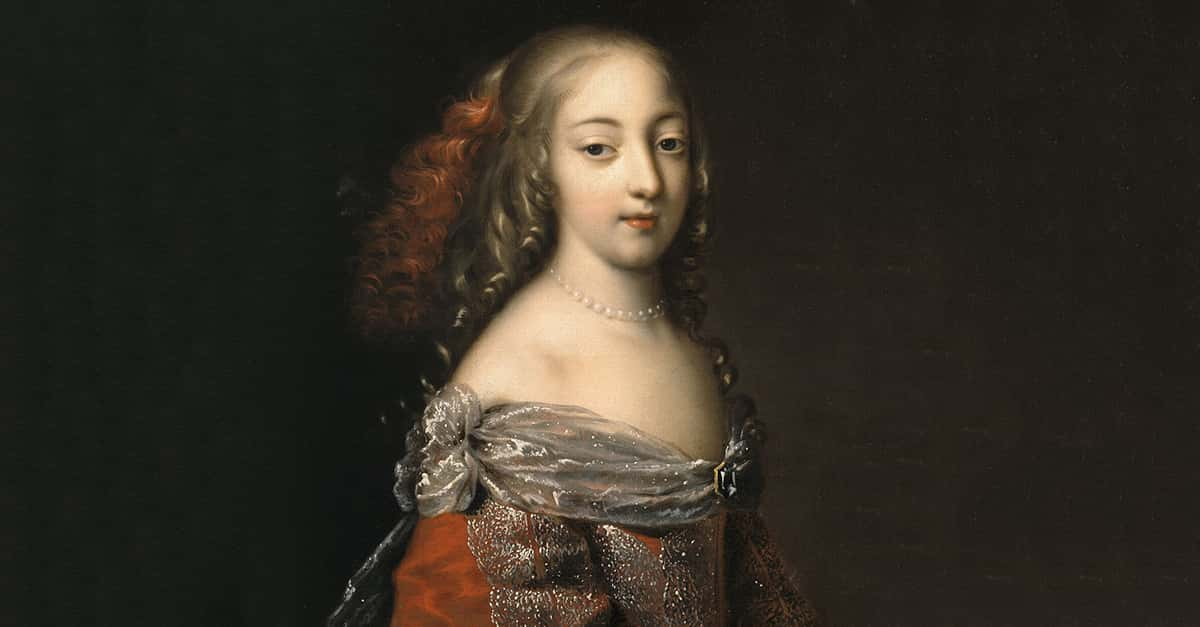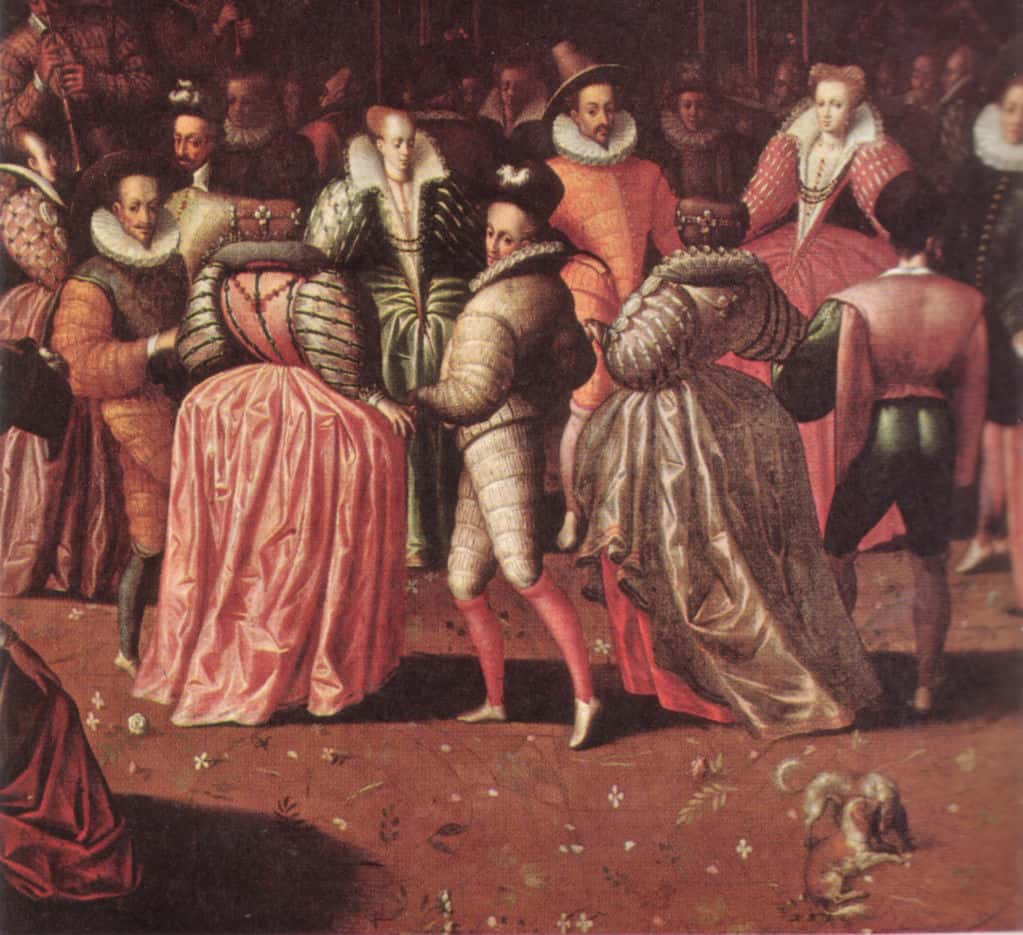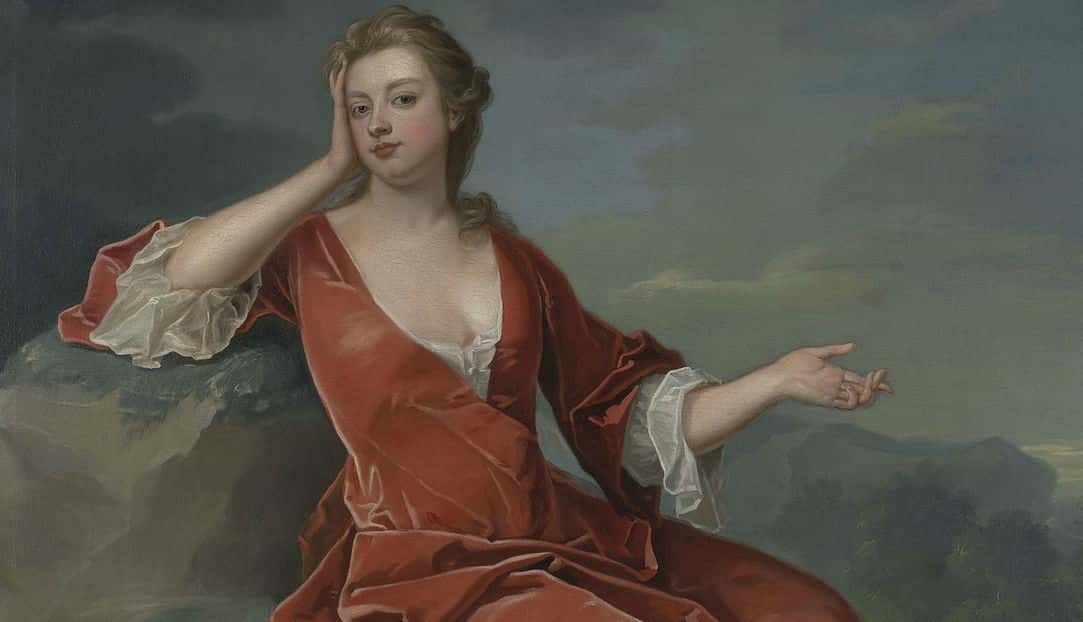What’s a good costume drama without courtly intrigue? Royal courts were more than super households: They were centers of international power. A well-timed whisper in the king’s ear could make (or break) fortunes. With this much power at stake, royal courts naturally became epicenters for espionage, plotting, and intrigue.
From secret affairs to not-so-secret assassinations, see past the well-dressed courtiers and expose these 50 scandalous facts about juicy court intrigues.
1. Dee. John Dee.
As a top spy for Elizabeth I of England, John Dee signed his private letters to the queen with codename “007". Centuries later, Ian Fleming would copy the insignia for his own spy hero, James Bond.

2. Too Close for Comfort…or Plausibility?
The beginning of Lucrezia Borgia’s bad “reputation” began with her annulment from her first husband, Giovanni Sforza. Pope Alexander tried to dissolve his daughter’s now inconvenient marriage on the grounds of non-consummation—much to her husband’s protest. In response, Giovanni made an incredibly disturbing accusation.
He accused Lucrezia of relationship with her brother, Cesare. Though the marriage was eventually annulled with none of the relationship accusations validated, the damage was done. Lucrezia and Cesare’s relationship would now forever be suspect.
 The Borgias (2011–2013), Showtime Networks
The Borgias (2011–2013), Showtime Networks
3. The Second Husbands Club
With Giovanni Sforza behind her, Lucrezia's family quickly married her off to Duke Alfonso of Aragon. As it turned out, this second marriage was even shorter than her first union—and ten times more violent. On the steps of St. Peter's Basilica, hired killers attack Alfonso. Miraculously, he survived multiple stab wounds—but the worst was yet to come. A few days later, another group of men burst into his room and strangled the invalid to the end.
According to lore, Lucrezia's eldest brother organized the deed, lending fuel to the fire that the siblings shared an, um, unusually passionate relationship.
 Showtime Networks, The Borgias (2011–2013)
Showtime Networks, The Borgias (2011–2013)
4. Affair of the Poisons
When an underground French poison ring broke up, the aristocracy's dirty laundry finally came out. No one exited the scandal looking good, but the person who suffered most was definitely Madame de Montespan, the chief mistress of Louis XIV. One conspirator testified that she bought aphrodisiacs and even performed Satanic rituals to stay ahead of her rivals.
5. Brought Down By the Bling
By 1785, Marie Antoinette’s reputation was already on its last legs. The Affair of the Diamond Necklace tarnished it further, as the queen’s name came up in a vicious plot. Like an old-school Ocean's 8, these offenders planned to con crown jewellers out of a priceless diamond necklace. Their plan kicked into gear when the Queen tried on the decadent accessory. While Marie decided to turn the gems down, some clever hucksters used her earlier interest against Marie. They disguised a adult worker as the Queen, approached jewellers, claimed Marie actually did want the necklace, and made off with their loot. But that's not even the juicy part.
One of the conspirators, Jeanne de La Motte, was part of the Queen’s circle. Her proximity to Marie Antoinette made people wonder, was the Queen secretly involved in the scam?
 Yann Caradec , CC BY-SA 2.0 , Wikimedia Commons
Yann Caradec , CC BY-SA 2.0 , Wikimedia Commons
6. Big Bess Is Watching You
Queen Elizabeth’s “Watchers” were a secret network of spies she used to control and capture intelligence at her court. From intercepting mail to interrogating possible dissenters, the Watchers kept intelligence on even seemingly innocent subjects. Because of them, some argue that Elizabethan England was Europe’s first truly modern surveillance state.
7. Old Habits Change Hard
Isabella Hoppringle was a 16th-century nun who knew how to have fun—if by “fun” you meant “leverage her intimate position with Queen Margaret of Scotland to sell intelligence to the English King Henry VIII". It was a sweet gig for the prioress who lived in a convent at the English and Scottish border. But in 1523, it looked like the good times were over.
A group of vengeful lords approached Isabella's convent, ready to ransack the place. Lucky for Isabella, Queen Margaret (who Isabella had spent years betraying) saved the day and called them off. Isabella thanked Margaret profusely and returned her queen’s forgiveness… by continuing to spy on her for the English. Ice cold, Isabella.
 Daniel Mytens, Wikimedia Commons
Daniel Mytens, Wikimedia Commons
8. Wasn't Me
In 1510, Henry VIII's distant cousin Anne Hastings was caught in her room with a close friend of the king’s, William Compton. Hastings was married, so this was a huge deal. Both Hastings and Compton denied anything inappropriate about their relationship, with Compton taking a sacrament to prove his innocence. Nevertheless, Henry banished Anne from court.
Throughout the messy affair, courtiers noticed that the Queen was strangely upset. To this day, some people believe that Henry was the one sleeping with Hastings, and his friend Compton was merely their go-between.
9. Boom Goes the Third Wheel
Did Mary, Queen of Scots ended her husband? If they had juries back then, that one might still be out. By the birth of their son in 1566, Mary’s marriage to Lord Darnley had disintegrated both personally and politically. While Mary was away, Darnley rested in a former abbey at Kirk o’Field. The abbey exploded, revealing a chilling sight.
Darnley was gone, but he wasn't ended by the blast. Instead, he had been smothered in the garden. Suspicion was immediately cast on not just Mary, but also on her ally and suspected lover, James Hepburn, the Earl of Bothwell.
 Mary Queen of Scots (2018), Focus Features
Mary Queen of Scots (2018), Focus Features
10. Unholy Matrimony
On 12 April 1567, the Earl of Bothwell was acquitted for the ending of Lord Darnley, Mary, Queen of Scots' husband. A free man, he set off to divorce his wife and marry the queen. Whether or not Mary went willingly with Bothwell is still a matter of debate. Nevertheless, the bad optics ruined support for Mary in Scotland. She had to abdicate and flee to her doom in England. Bothwell faced an even darker fate.
 Unidentified painter, Wikimedia Commons
Unidentified painter, Wikimedia Commons
11. A Horrible End
Bothwell was imprisoned for ten years in the Danish fortress of Dragsholm. During this time, Bothwell was chained to a pillar short enough to prevent him from fully standing up, and was kept in the dark in his own dirt and grime. He apparently passed insane and covered in hair, and up until recently, his alleged mummified remains were on display in a nearby museum.
 Wikimedia Commons, Shroedingerskat
Wikimedia Commons, Shroedingerskat
12. Like Father, Like Son
The famous Chinese consort Wu Zetian was not content to sit around and become a Buddhist nun when her lover the Emperor passed. When Emperor Li Zhi passed , his son Emperor Taizong paid his dad's old mistress a visit. After being reminder of her beauty and intrigue, the new Emperor defied tradition. He brought his own father’s consort back home to be his new mistress. Unknown author, Wikimedia Commons
Unknown author, Wikimedia Commons
13. This Dane Lived
In addition to having the best name possible in 15th century Denmark, Brita Tott was born into an aristocratic family. It’s not like she needed to spy… but spy she did, even plotting with Charles VII of Sweden against her own king. When the authorities discovered her duplicity in 1452, they sentenced her to capital penalty with a brutal method.
They would trap her in a custom chamber, burying her alive brick by brick, (yes, like in the Cask of Amontillado). As if this wasn't imposing enough, she somehow finessed her way out of any punishment and went on to be a huge patron of art. Jacob Truedson Demitz, acquired by Ristesson Ent., Wikimedia Commons
Jacob Truedson Demitz, acquired by Ristesson Ent., Wikimedia Commons
14. Faker!
After escaping the end for spying, Brita Tott turned her passion for intrigue into a career in forgery. Legend goes that she swindled money off people living and gone. Eventually, Tott was put on trial for forgery and condemned for illegally selling estates to the royal court. Again, she was spared. She was not a Tott to pin down for long.
15. The Littlest Intrigues And You
Francis Walsingham started a school for spies in England. They would learn things from literacy to coded messages, all in the name of national security... at least in theory.
16. Beware Uncle Rick
In 1483, England was rocked by the end of King Edward IV. Luckily, he left not one but two little boys behind, with the general idea being that the eldest would take the crown. Sadly, that didn't happen. Instead, one of the most notorious and heartbreaking mysteries in British history happened instead. When little Edward and his brother Richard were just 12 and 9 years old, their cruel uncle Richard, Duke of Gloucester, put them in the Tower of London.
17. The Princes in the Tower
Uncle Richard said the tower was just a place to wait before Edward was crowned King, but that was a brutal lie. Instead, Richard took the throne after the little boys were declared to be illegitimate. No one knows exactly what happened next, but everyone is certain of one thing: the princes were never seen again. Many think that Richard ended them so that he could seize the crown. National Portrait Gallery, Wikimedia Commons
National Portrait Gallery, Wikimedia Commons
18. No Good Deed Goes Unpunished
Known professionally as “Pompeo Pellegrini,” Antony Standen was a Renaissance spy and mentee of Francis Walsingham (one of Queen Elizabeth's inner circle). While working for the English, Standen got information that allowed England to crush the Spanish fleet. He thought he'd get a hero's welcome when he returned to England, but he just got crickets. While Standen was away, Walsingham kicked he bucket. Without Walsingham, there was no way the Queen would give Standen special treatment. Angry and bitter, Standen decided to betray the crown.  John Slezer, Wikimedia Commons
John Slezer, Wikimedia Commons
19. Any Attention is Good Attention
Standen tried to help the Catholic Church spy on Protestant England. Presto change-o, Standen was suddenly interesting enough to be noticed by Queen Elizabeth. Years after he helped her defeat the Spanish, Elizabeth finally gave Standen the attention he was after…by promptly locking him in the Tower of London.  Wikipedia
Wikipedia
20. Arrgh, Where’s My Plea Bargain?
In 1571, England got confirmation that Spain and the Pope were working to depose Elizabeth I—all thanks to a captured pirate. William Herle was a sea rogue and a key informant in the plot against Elizabeth I. Once he was detained, the swashbuckler cut a deal. Herle managed to pass himself off as someone sympathetic to the Pope while actually sending sweet, sweet spy info right back to Elizabeth.  National Portrait Gallery, Wikimedia Commons
National Portrait Gallery, Wikimedia Commons
21. This is Why You Always Check For Monsters Under The Bed
Did Francis Walsingham fake a execution attempt on his own Queen Elizabeth? Some scholars think so. After all, the spymaster was desperate for the English queen to sign Mary Queen of Scots' end warrant. Some think he would have done anything, and we mean anything, to get the rival Scot out of the royal picture.
And so, in 1587, an underling named William Stafford “uncovered” an execution attempt against Elizabeth’s life. Stafford claimed that the French secretary planned to put gunpowder under Elizabeth's royal bed, which would have exploded and ended her. It seems like a straightforward execution idea, but the aftermath was utterly bizarre.
22. Um, What?
Everyone was cleared of all charges, and even though Walsingham accused Stafford of lying to take money, Stafford didn’t lose any favor. This weird episode led many to think that this was a botched attempt by Walsingham to shake up his queen. If she thought her life was in danger, she might be more eager to secure Mary’s head warrant.
 Elizabeth: The Golden Age, Universal Pictures
Elizabeth: The Golden Age, Universal Pictures
23. All's Fair in Love and Battle
Why should men get all the fun? According to some accounts, Catherine de Medici had a “stable” of 86 (or maybe even 300? Who can keep track...) beautiful ladies-in-waiting. But these weren't your average courtesans. Medici make weapon from her ladies and used them to get into the beds of courtiers and keep tabs on local intelligence. These women, who came to be known as “Flying Squadron,” even graced the beds of her own sons.
24. A Sexy Smoke Blast
A love triangle and some serious family drama are at the heart of Catherine de Medici’s most famous Flying Squadron tale. Catherine was not one to be messed with. She knew that predicting usurpers was the key to maintaining power, and she would go to any lengths to keep her title, even if it meant turning on her own family. Case in point: Catherine noticed that her son, Francis the Duke of Alençon, was getting friendly with his brother-in-law Henri of Navarre. If they united, Catherine might be in serious trouble. But how to keep them apart?  Formerly attributed to François Clouet, Wikimedia Commons
Formerly attributed to François Clouet, Wikimedia Commons
25. Catherine: 1, Boys: 0
Catherine supposedly deployed her top courtesan-spy Charlotte de Sauve into the bed of her son-in-law, Henri… all while Charlotte was also sleeping with Catherine’s younger son, Francis. If Catherine's plan was to drive a wedge between these guys, oh boy, she succeeded. In a letter, Henri's wife Marguerite complained that Charlotte treated her husband and her brother “in such a way that they became extremely jealous of each other, to such a point that they forgot their ambitions, their duties and their plans and thought of nothing but chasing after this woman".  Pierre Dumonstier, Wikimedia Commons
Pierre Dumonstier, Wikimedia Commons
26. Dear Penthouse
While other tales have been told more, few Flying Squadron stories get steamier than the (alleged) 1577 banquet, where all of Catherine’s lady-spies served the guests while “half-undressed". The source for this story was not present at the buff bash in question, but a tiny detail like dubious sources can’t stop such a scandalous night from making it into the history books.  Antoine Caron, Wikipedia
Antoine Caron, Wikipedia
27. When the Spymaster Becomes The Spied Upon
Before he was Lord Chancellor and Henry VIII of England’s “pet dog Thomas,” he was Thomas Cromwell—an Englishman who served overseas as a rumored spy. As he rose in the king’s court, Cromwell cultivated a massive network of spies across the British Isles. Unfortunately, his career (and neck) came to an end in 1540, after the disastrous marriage of King Henry to Anne of Cleves. Many people were happy to see him go, and some even helped ensure it happened.
 Wikimedia Commons
Wikimedia Commons
28. A Matter of National Insecurity
If you were a courtier at Versailles, you might find yourself thrown out for no reason. Chances were, you wrote something off-putting about King Louis XIV in a letter. Paranoid about plots, Louis went to disturbing lengths to know what people really thought. He had all mail at Versailles opened, read, and then resealed to keep his subjects in check. Don’t try hiding your diss within some secret code either; Louis also employed top cryptographers to decode every letter’s hidden messages.
29. What Happens Between Siblings... Doesn’t Stay Between Siblings
In the 1540s, Henry Howard, Early of Surrey, suggested to his sister Mary that she should seduce the king and become his powerful mistress. Mary outright refused for a chilling reason. The king in question was her father-in-law, Henry VIII. She would later testify to this exchange when Howard was detained and executed for treason. 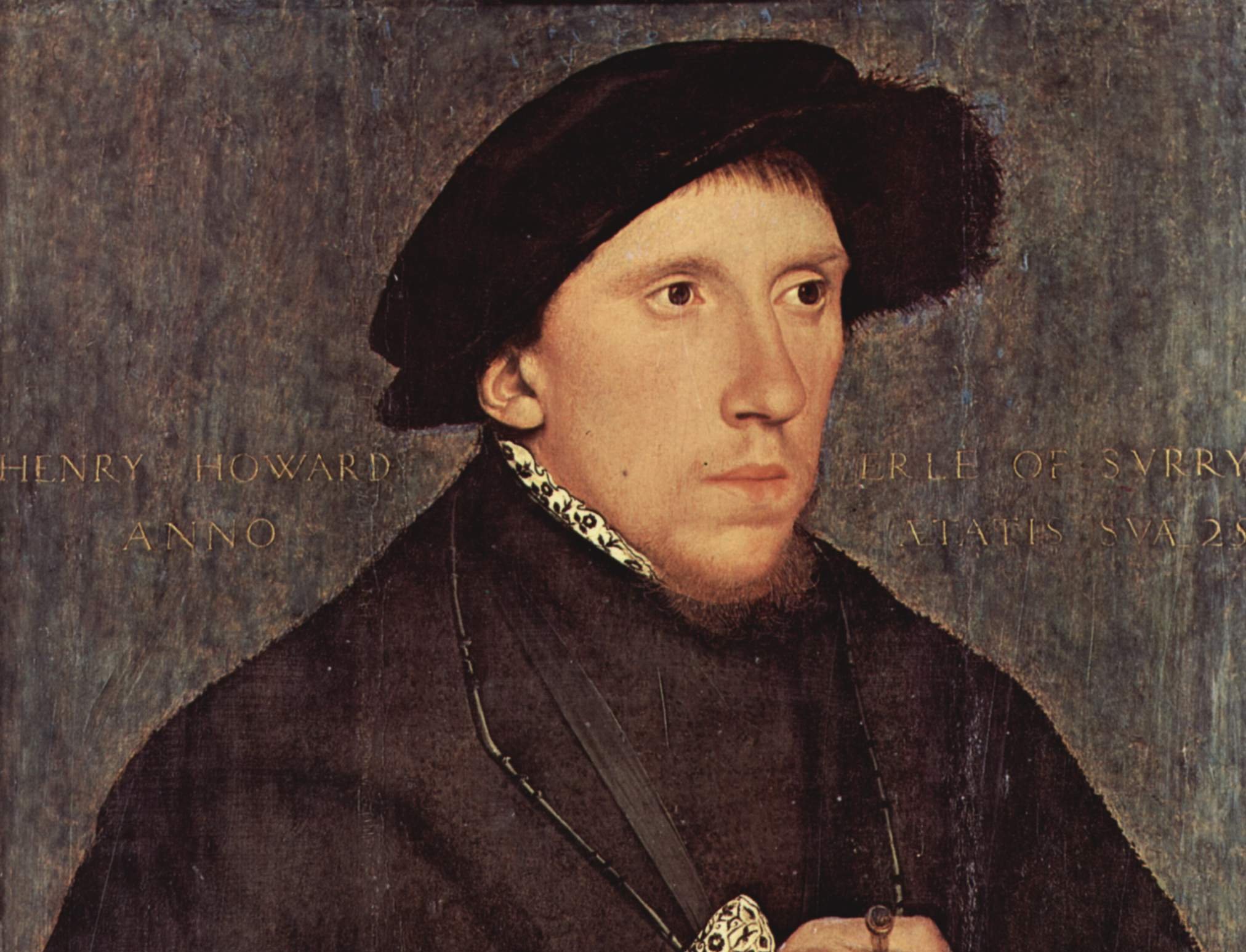 Hans Holbein the Younger, Wikimedia Commons
Hans Holbein the Younger, Wikimedia Commons
30. Get Away From My Niece
The Tudors loved their secret marriages. Margaret Douglass was one of Henry VIII's nieces. While she enjoyed great favor from her uncle, she also drew his wrath twice for contracting “bad” marriages. In 1536, Margaret got engaged to Thomas Howard, an uncle of Anne Boleyn. Yeah, that Anne Boleyn, the one who'd married Henry VII and then been executed.
In a very bad move, Margaret essentially brought a traitor’s uncle into the family—one where Margaret was suddenly very high in the line of succession. Unsurprisingly, Henry VIII found a reason to condemn Howard to be ended. While he was spared the block, Henry's would-be nephew-in-law passed in lock up on Halloween 1537.
31. Two Times The Harm
After the debacle with Thomas Howard, Margaret began another affair with an, er, interesting choice: Charles Howard. Not only was Charles the nephew of her last lover (the one who perished in lock upfor her), but he was also the brother of the current Queen Catherine Howard. For the dalliance, Margaret spent another period in disgrace with Henry VIII, but at least she lived to tell the tale. 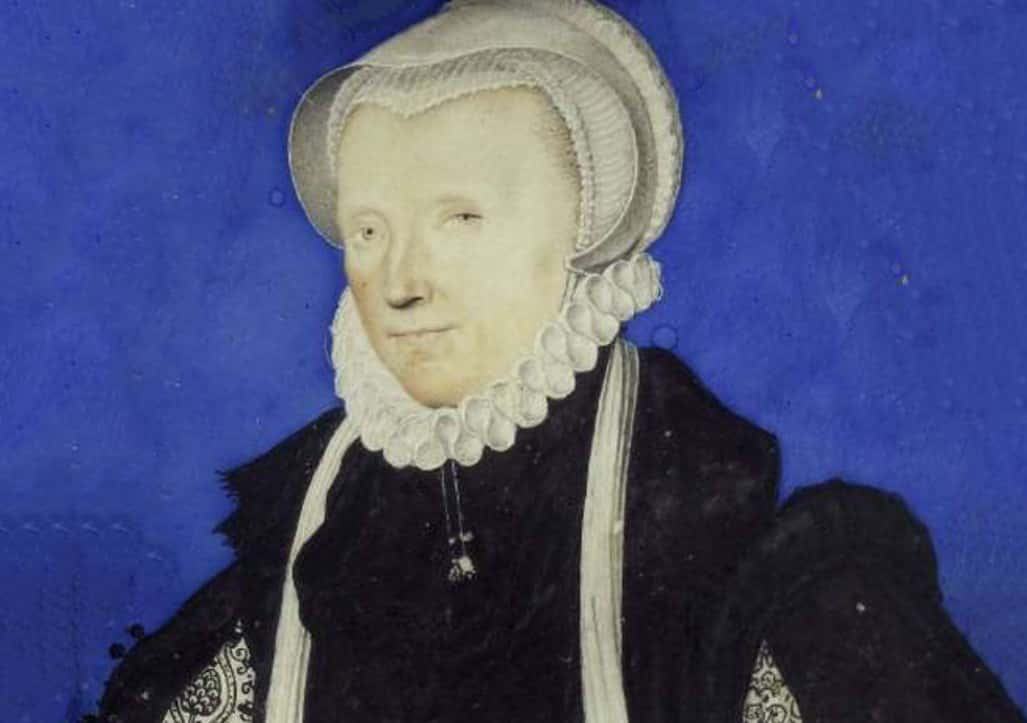 Attributed to Nicholas Hilliard, Wikimedia Commons
Attributed to Nicholas Hilliard, Wikimedia Commons
32. Warning Shot
As the last wife of Henry VIII, Catherine Parr narrowly escaped execution thanks to her arrest warrant just “happening” to “drop” outside of her room. Armed with a warning, she was able to smooth things over with her king and avoid being burned for heresy.
33. Cry Uncle
In 1549, a failed plot to hold captive 11-year-old King Edward VI of England resulted in only two casualties. The first: the king’s precious dog, who was hurt by the young king’s own uncle, Thomas Seymour. The second: Seymour himself, who was executed for trying to abduct the boy-king in a seizure of power against his brother. Seymour went down for 33 charges for treason, which I’m sure included royal animal brutality-related acts.
34. Dismiss Her, Sis
Thanks to The Favorite, it looks like Sarah Churchill will mostly be remembered as a hanger-on/nightmare BFF to her mistress, Queen Anne. However, Churchill was already stirring up trouble long before Anne became queen. In the earlier reign of William I and Mary II, Churchill advocated for then-Princess Anne to get a government income that would make her independent from her sibling.
The queen was not happy about this request, ordering her sister and heir, Anne, to dismiss the troublesome Churchill. Anne refused, which destroyed the sisters’ relationship, but solidified her bestie bond with Sarah.
35. Best Friends For Never
The intrigue that spelled the end of Sarah Churchill’s friendship to Anne was of scandalous origin: accounting. Churchill was Keeper of Anne’s Privy Purse; she was supposed to know all the ins and outs of the Queen’s accounts. By 1707, the controlling Sarah was being replaced by her own cousin, Abigail. Anne even attended Abigail’s secret wedding without Churchill’s knowledge.
When Churchill found out, she also discovered that Anne had gone over her head to pay Abigail’s dowry out of her own purse. This clerical mishap humiliated Churchill and toppled her control over Anne.  Unknown author, Wikimedia Commons
Unknown author, Wikimedia Commons
36. Can’t Put a Price On Discretion
Court spies and intrigue didn’t get lost with royal power. In 2010, Sarah Ferguson—the ex-wife of Prince Andrew, Duke of York—was offered an extravagant sum for her family’s secrets. Ferguson’s chilling response caused a national scandal. She accepted £500,000 (approx. $700,000 USD) in return for her royal family member intel. There was just one problem: The secret hunter wasn't who they said. They were actually an undercover journalist, and they'd caught Sarah's error on video.
37. Premature Evacuation
Cardinal Richelieu wasn’t just a Three Musketeers Villain; he was a real dude who shared influence over Louis XIII of France for years with the Queen Mother, Marie de Medici. By 1630, their alliance had soured; Marie essentially told her son, “It’s me—your mom—or this dude!” Louis went to Versailles on a hunting trip to think about it, but Richelieu was not optimistic.
In fact, everyone thought Richelieu’s career was over—I mean, it was the king’s mom they were talking about—and enemies celebrated his demise at Luxembourg Palace. Unfortunately, this was premature: Louis came back home to side with his Cardinal. Rejected mommy dearest slunk away to exile, and this embarrassingly too-soon celebration would go down in history as "The Day of the Dupes". 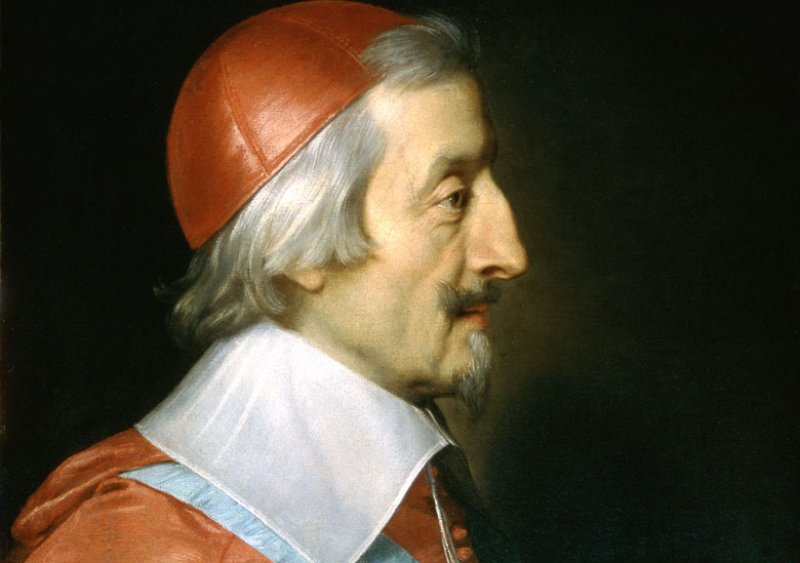 Philippe de Champaigne, Wikimedia Commons
Philippe de Champaigne, Wikimedia Commons
38. Delete Your Inbox
Intrigues of the French court were not kind to Louis XIV of France’s mother, Anne of Austria. While she was still queen consort to his father, Anne was investigated for secret correspondence during the battle with Spanish forces. She admitted her guilt and as a result, she lost a ton of queenly freedoms. No longer able to visit convents without permission, or even be alone without a trusted supervisor, it wasn’t great to be queen.  Peter Paul Rubens, Wikimedia Commons
Peter Paul Rubens, Wikimedia Commons
39. Cheaters Never Prosper
One Elizabethan spy made a grave mistake. He tried to play both the Queen and the Pope. William Parry spent his career spying on Catholics for Queen Elizabeth. In 1583, he ran out of money and tried to write to the Pope, offering his espionage services to the Catholic Church. Unfortunately, he was found out just two years later. Elizabeth had pardoned him from the end before, related to previous assault charges, so she showed no mercy this time.
Parry was hanged, drawn, and quartered for his involvement in a royal execution attempt.
40. Plot Twist
When Duke of Burgundy needed intel to use against the Turks, he knew exactly who to call: Bertrandon de la Broquiere. He had the unenviable task of infiltrating 15th century Palestine and getting insider info about the army. While Broquiere succeeding in getting the goods, he also brought back something far more shocking.
Broquiere described how the Palestinians cared for him when he was sick, and how many of the people there co-existed with him and others despite their different religious backgrounds. Without Broquiere's espionage reports, we'd know very little about life in the Middle East at that time.
41. I Spy Some Overkill
A spy’s work is never done. Francis Walsingham, the spymaster to Queen Elizabeth I, spent the better part of his career undermining plots to overthrow Elizabeth and see her replaced with Mary, Queen of Scots. When Mary was finally executed, Walsingham even burned the headless queen’s clothes and encased her body in lead to make sure no part of her would end up in the wrong hands. Now that’s what I call dirty work.
42. Nosedive
The, er, convenient end of Amy Robsart cast a pall on the lifelong romance between Robsart's husband Robert Dudley and his rumored lover, Elizabeth I of England. Robsart never followed her rising star husband to court; she was rumored to be suffering from long-term illness. One day in 1650, she gave all of her servants the day off to attend a fair… and then was found lifeless at the bottom of the stairs in her home.
Her suspicious end launched a formal inquest against Dudley, who was suspected of ending his wife to make way for the Queen. No charges were ever filed; it was ruled that Robsart tripped and suffered head injuries. Nevertheless,her passing neatly nixed any chance of Dudley and Elizabeth ever marrying each other, under fear of massive backlash.
43. A Princess Never Settles for Seconds
The year 1952 was a mixed bag for Princess Margaret, the sister of Queen Elizabeth. For starters, her father passed, but then again, this was also the year that Margaret met her first great love, Captain Peter Townsend. 16 years older than Margaret, Townsend had divorced his first wife earlier that year and he and Margaret made plans to marry. Unfortunately, that whole “divorced suitor” thing didn’t sit well with the Church of England, of which Margaret’s sister was now the Supreme Head…  Press Agency photographer, Wikimedia Commons
Press Agency photographer, Wikimedia Commons
44. A Royal Waiting Period
Queen Elizabeth II didn’t immediately veto Margaret’s romance with Peter Townsend. Instead, the Queen asked her sister to wait a year, so her Majesty could deal with other issues like their grandmother Queen Mary’s funeral. It sounded like a reasonable idea, but poor Margaret was doomed to a heartbreaking fate.  Onbekend / Anefo, CC0, Wikimedia Commons
Onbekend / Anefo, CC0, Wikimedia Commons
45. A Matter of Heart and State
The media and the British Cabinet refused to countenance the marriage between a princess and a divorced commoner, lamenting how such a match would “fly in the face of Royal and Christian tradition". Prime Minister Winston Churchill himself told the Queen that the leaders of the Dominion would all vote “No” on the marriage unless Margaret gave up her rights to inherit the crown. Ouch. On Halloween 1955, Princess Margaret officially renounced her intention to marry Peter Townsend.  Yousuf Karsh (1908–2002), Wikipedia
Yousuf Karsh (1908–2002), Wikipedia
46. Monster In Law
Competition in the Ottoman Imperial court was fierce, extending all the way to the sultan’s consorts and even his own mom. Take Nurbanu Sultan, the Queen Mother of Sultan Murad III: She suspected that her daughter-in-law was intoxicating her son from “performing” with other concubines. In 1583, Nurbanu ordered a twisted punishment. She had her daughter-in-law's maids tortured because of "witchcraft". Sure, Jan.  TIMS Productions, The Magnificent Century (2011–2014)
TIMS Productions, The Magnificent Century (2011–2014)
47. Do-Re-Me-Fa-Spy
Petrus Alamire was the codename of a musician, scribe and spy employed by Henry VIII of England to keep tabs on the king’s suspicious cousin, Richard de la Pole. The spy’s name was a pun on his musical disguise; “A-la-mi-re,” like the musical notes in "Do-re-mi-fa-so-la-ti-do"... get it? Perhaps bold flaunts like that were why Alamire was eventually caught and never returned to England.
48. I Wouldn’t Bet On It
Edward VII was a huge gambler. The son of Queen Victoria was most irresponsible in his Prince of Wales days, such as when he bet £600 (a fortune today) on a horse race. Of course, he lost. Unfortunately, he was being watched by more than his bookies. A royal spy had been keeping tabs on Edward for his mom, and they promptly wrote to warn of her son’s dangerous spending habits.  Luke Fildes, Wikimedia Commons
Luke Fildes, Wikimedia Commons
49. Never Trust a Writer
Don’t mistake him for the female author of Middlemarch—this George Eliot was a 1580s murderer-turned-spy who went after people who wrote books… specifically books about why you should be a Catholic in Protestant England. Elizabeth I's favorite statesman Robert Dudley even sent Eliot after a Jesuit priest who was getting in the way of the crown's religious policies.
Eliot kept an eye on the priest himself at his parish. He then promptly called the local magistrate to get the man of god detained for his ideas.  Steven van der Meulen, Wikimedia Commons
Steven van der Meulen, Wikimedia Commons
50. Hands of Fate
In 1572, Jeanne d’Albret, the Queen of Navarre, suddenly dropped lifeless right before her son’s wedding. Rumors swirled that she had been poisoned by none other than her rival, the ruthless Queen Mother of France, Catherine de Medici, whose daughter was set to marry d’Albret’s son. Nothing was proven, but the popular theory is that she was ended by a gift of poisonous gloves from Catherine. If that was the case, then the Queen literally ended her rival with kindness.
51. Message In a Bottle
By the 1580s, Mary Queen of Scots had been under arrest by her cousin Queen Elizabeth of England for some years. Perhaps outside of her knowledge, a group of assassins was planning to end her cousin and crown Mary on the English throne. One of these men sent a secret note via a brew shipment that was set to her rooms.
Unfortunately, Mary didn’t know that her courier was a double-agent for Queen Elizabeth—he had already opened, read, then resealed the note, sent it to Mary, and waited for a reply. She made the mistake of writing back, which exposed the plot and got her executed. But this was no cut-and-dry execution—the headsman botched the first attempt at beheading Mary, and needed two swings to do the deed. Goes to show: watch what you drink.  François Clouet, Wikimedia Commons
François Clouet, Wikimedia Commons
Sources: 1, 2, 3, 4, 5, 6, 7, 8, 9, 10, 11, 12, 13, 14, 15, 16, 17, 18, 19, 20, 21, 22, 23, 24, 25, 26, 27, 28, 29, 30, 31, 32


